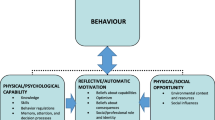ABSTRACT
BACKGROUND
Using trained interpreters to provide medical interpretation services is superior to services provided on an ad hoc basis, but little is known about the effectiveness of providing their services remotely, especially using video.
OBJECTIVE
To compare remote medical interpretation services by trained interpreters via telephone and videoconference to those provided in-person.
DESIGN
Quasi-randomized control study.
PARTICIPANTS
Two hundred and forty-one Spanish speaking patient volunteers, twenty-four health providers, and seven interpreters.
APPROACH
Patients, providers and interpreters each independently completed scales evaluating the quality of clinical encounters and, optionally, made free text comments. Interviews were conducted with 23 of the providers, the seven interpreters, and a subset of 30 patients. Time data were collected.
RESULTS
Encounters with in-person interpretation were rated significantly higher by providers and interpreters, while patients rated all methods the same. There were no significant differences in provider and interpreter ratings of remote methods. Provider and interpreter comments on scales and interview data support the higher in-person ratings, but they also showed a distinct preference for video over the phone. Phone interviews were significantly shorter than in-person.
DISCUSSION
Patients rated interpretation services highly no matter how they were provided but experienced only the method employed at the time of the encounter. Providers and interpreters were exposed to all three methods, were more critical of remote methods, and preferred videoconferencing to the telephone as a remote method. The significantly shorter phone interviews raise questions about the prospects of miscommunication in telephonic interpretation, given the absence of a visual channel, but other factors might have affected time results. Since the patient population studied was Hispanic and predominantly female care must be taken in generalizing these results to other populations.

Similar content being viewed by others
References
Shin H, Bruno R. Language use and English-speaking ability: 2000. U.S. Census Bureau, U.S. Department of Commerce Census 2000 Brief, October 2003. Available from: http://www.census.gov/prod/2003pubs/c2kbr-29.pdf Accessed December 2009.
Office of Minority Health. National standards for culturally and linguistically appropriate services in health care: Final Report. Washington: U.S. Department of Health & Human Services; 2001 [cited 2001 Mar]. Available from: http://www.omhrc.gov/assets/pdf/checked/finalreport.pdf Accessed December 2009.
Karliner L, Jacobs E, Mutha S. Do professional interpreters improve clinical care for patients with limited English proficiency? A systematic review of the literature. HSR: Health Serv Res. 2007;42(2):727–54.
Flores G. The impact of medical interpreter services on the quality of health care: a systematic review. Med Care Res and Rev. 2005;62(3):255–99.
Azarmina P, Wallace P. Remote interpretation in medical encounters: a systematic review. J Telemed Telecare. 2005;11:140–5.
Hornberger J, Gibson C, Wood W, Dequeldre C, Corso I, Palla B, Bloch D. Eliminating language barriers for non-English-speaking patients. Med Care. 1996;34(8):845–56.
Gany F, Leng J, Shapiro E, Abramson D, Motola I, Shield D, Changrani J. Patient satisfaction with different interpreting methods: a randomized controlled trial. J Gen Intern Med. 2007;22(Suppl 2):312–8.
Cunningham H, Cushman L, Akuete-Penn C, Meyer D. Satisfaction with telephonic interpreters in pediatric care. J Nat Med Assoc. 2008;100(4):429–34.
Lee L, Batai H, Maselli J, Kutner J. Effect of Spanish interpretation method on patient satisfaction in an urban walk-in clinic. J Gen Intern Med. 2002;17:640–5.
Garcia E, Roy L, Okada P, Perkins S, Wiebe R. A comparison of the influence of hospital-trained, ad hoc, and telephone interpreters on perceived satisfaction of limited English proficient parents presenting to a pediatric emergency department. Ped Emer Care. 2004;20(6):373–8.
Kuo D, Fagan M. Satisfaction with methods of Spanish interpretation in an ambulatory care clinic. J Gen Intern Med. 1999;14:547–50.
Fagan M, Diaz J, Reinert S, Sciamanna C. Impact of interpretation method on clinic visit length. J Gen Intern Med. 2003;18:634–8.
Jones D, Gill P, Harrison R, Meakin R, Wallace P. An exploratory study of language interpretation services provided by videoconferencing. J Telemed Telecare. 2003;9(1):51–6.
Saint-Louis L, Friedman E, Chiasson E, Quessa A, Novaes F. Testing new technologies in medical interpreting. Somerville, Massachusetts: Cambridge Health Alliance; 2003.
Paras M, Leyva O, Berthold T, Otake R. Videoconferencing medical interpretation: the results of clinical trials. Oakland, California: Health Access Foundation; 2002.
Gany F, Kapelusznik L, Prakash K, Gonzeles J, Orta L, Tseng C, Changrani J. The impact of medical interpretation method on time and errors. J Gen Intern Med. 2007;22(suppl 2):319–23.
Meaki R, Weinman J. The ‘Medical Interview Satisfaction Scale’ (MISS-21) adapted for British general practice. Fam Pract. 2002;19(3):257–64.
Brown J, Boles M, Mullooly J, Levinson W. Effect of clinician communication skills training on patient satisfaction: A controlled clinical trial. Ann Intern Med. 1999;131:822–9.
Loblaw A, Bezjak A, Bunston T. Development and testing of a visit specific patient satisfaction questionnaire: The Princes Margaret Hospital Satisfaction with Doctor Questionnaire. J Clin Onc. 1999;1931–8.
Baker D, Hayes R, Fortier J. Interpreter use and satisfaction with interpersonal aspects of care for Spanish-speaking patients. Med Care. 1998;36(10):1461–70.
Bertakis K, Roter D, Putnam S. The relationship of physician medical interview style to patient satisfaction. J Fam Pract. 1991;32(2):175–81.
Cleary P, McNeil B. Patient satisfaction as an indicator of quality care. Inquiry. 1988;25:25–36.
Ware J, Hays R. Methods for measuring patient satisfaction with specific medical encounters. Med Care. 1988;26(4):393–402.
Acknowledgements
This work was supported by the National Institutes of Health intramural research program and by NIH contracts, HHSN276200700281P and HHSN276200700292P.
Conflicts of Interest
Mr. Roberson and Dr. Maisiak currently work at for-profit companies. None of the authors have any relationships that affected the outcome of this research. Mr. Roberson was Director of Interpretation Services at the Medical University of South Carolina when he participated in the study. Dr. Maisiak provided statistical consultation.
Author information
Authors and Affiliations
Corresponding author
Rights and permissions
About this article
Cite this article
Locatis, C., Williamson, D., Gould-Kabler, C. et al. Comparing In-Person, Video, and Telephonic Medical Interpretation. J GEN INTERN MED 25, 345–350 (2010). https://doi.org/10.1007/s11606-009-1236-x
Received:
Revised:
Accepted:
Published:
Issue Date:
DOI: https://doi.org/10.1007/s11606-009-1236-x




